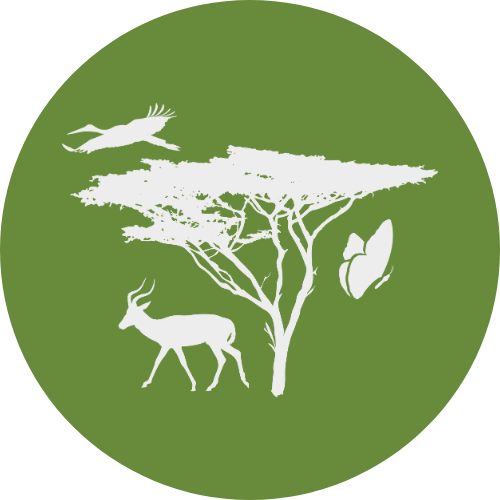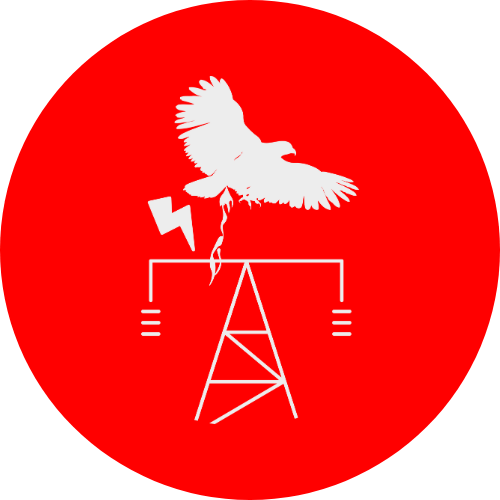KGALAGADI STRATEGIC CONSERVATION LANDSCAPE
 The Kgalagadi Transfrontier Park (KTP) spans over 59,000 km² across Botswana and South Africa, forming one of Africa’s largest and most undisturbed conservation landscapes. This vast, arid region supports iconic wildlife such as the black-maned African Lion, Cheetah, Brown Hyena, and over 300 bird species, including birds of prey and regionally endemic raptors. It is also a refuge for endangered species like the African Wild Dog and Temminck’s Pangolin. The landscape holds deep cultural importance for the Khomani San people, who maintain a strong connection to the land through sustainable, traditional practices.
The Kgalagadi Transfrontier Park (KTP) spans over 59,000 km² across Botswana and South Africa, forming one of Africa’s largest and most undisturbed conservation landscapes. This vast, arid region supports iconic wildlife such as the black-maned African Lion, Cheetah, Brown Hyena, and over 300 bird species, including birds of prey and regionally endemic raptors. It is also a refuge for endangered species like the African Wild Dog and Temminck’s Pangolin. The landscape holds deep cultural importance for the Khomani San people, who maintain a strong connection to the land through sustainable, traditional practices.
The EWTs work in the Kgalagadi focuses on protecting threatened species, reducing the impact of illegal wildlife trade, and supporting protected area management. We work with communities and partners to promote nature-based livelihoods that honour local knowledge, while strengthening eco-tourism models that contribute to both conservation and employment.
To ensure long-term impact, we are developing sustainable finance mechanisms, improving the legal protection for threatened species and habitats, and aligning economic activity with biodiversity protection. We also monitor potential risks from energy infrastructure development to minimise its impact on sensitive species. Scientific tools such as Bioblitzes help us map biodiversity more effectively and guide our conservation interventions.
Together with communities and regional partners, we are securing the future of one of southern Africa’s last great wild places, where cultural heritage, biodiversity, and climate resilience converge in a powerful vision for people and nature.
Why it’s important
The Kgalagadi Transfrontier Park (KTP) is a cornerstone of the EWTs landscape strategy due to its relatively undisturbed ecosystem and exceptional biodiversity, which includes iconic species such as the African Lion, Cheetah, and rare carnivores like the Brown Hyena.
This vast, arid landscape is not only a sanctuary for wildlife, but also a key cultural and ecological area for the Khomani San people, whose traditional knowledge and sustainable practices are integral to the region’s long-term survival. The KTPs transboundary nature allows for effective conservation efforts across national borders, ensuring that species can move freely across the landscape.
So What?
Without immediate action, this fragile ecosystem – essential for maintaining Africa’s natural heritage – could face irreversible degradation. The twin threats of climate change and poaching are already taking a toll, and if we do not intervene, the loss of species and cultural heritage will be felt far beyond the park.
The KTP is not only crucial for wildlife conservation, but also supports the sustainable livelihoods of local communities. Inaction would lead to the collapse of this ecosystem, which would have cascading effects on both biodiversity and human well-being. Protecting the Kgalagadi is essential for preserving Africa’s natural legacy and supporting future generations of people and wildlife alike.
Vision
Create a vast, thriving conservation landscape, where wildlife roam free, and ecosystems flourish. This landscape connects fragmented habitats, supports biodiversity, and promotes ecological and climate resilience. Local communities coexist with wildlife, benefiting from sustainable tourism and eco-friendly livelihoods. Together, we protect and restore this breathtaking region, preserving its natural beauty and uniqueness for future generations.
Target Species
Landscape Size
59,135 KM²
Why we do it

protect biodiveristy
Lead collaborative efforts to safeguard species and rebuild life-sustaining ecosystems, working with, for example, governments, landowners, and Indigenous Peoples and Local Communities (IPLCs).

secure vital ecosystem services
Healthy ecosystems provide essential services like clean air, water, and food security.

Empower communities
Enable IPLCs to thrive through nature-based solutions that connect conservation with human well-being, equity, and sustainable livelihoods.

build a sustainable future
Embed biodiversity into corporate strategies and operations to deliver measurable positive outcomes for nature and create resilient, future-fit businesses.

Improve climate Resilience
Build climate adaptation and resilience into conservation efforts to protect biodiversity and human well-being.

Enhance water security
Prioritise the safeguarding of critical freshwater systems and catchments across Africa's threatened landscapes.
Cross cutting approaches

People in conservation unit
Co-developing and implementing conservation management approaches to ensure sustainable conservation impact and benefit sharing.

Wildlife and Infrastructure unit
Reducing infrastructure impacts on species and habitats.

Biodiversity and Business Unit
Supporting the integration of biodiversity into corporate strategy and operations, to achieve measurable positive biodiversity outcomes.

Sustainable Finance Unit
Focusing on mobilising financial resources to support conservation efforts.

Wildlife in Trade Unit
Disrupting and preventing illegal wildlife trade in the landscape.

Conservation Tools and Technology Unit
Discovering new species and understanding species distributions to inform conservation priorities in the landscape.
